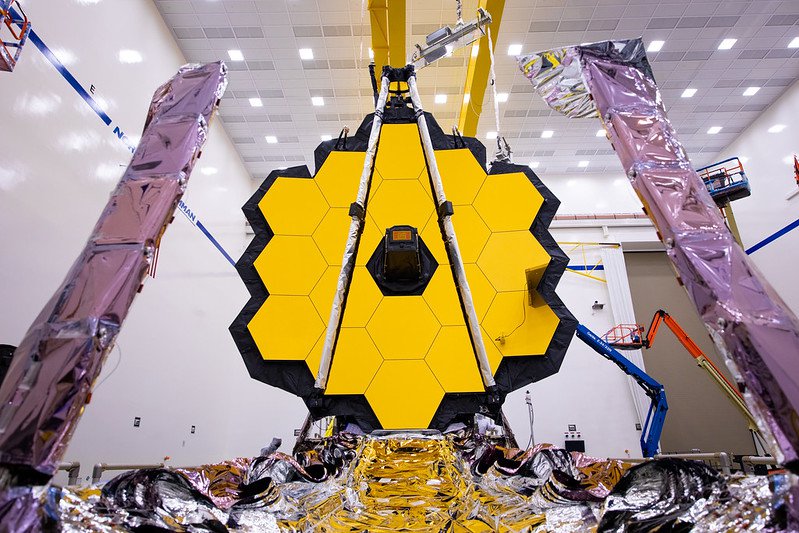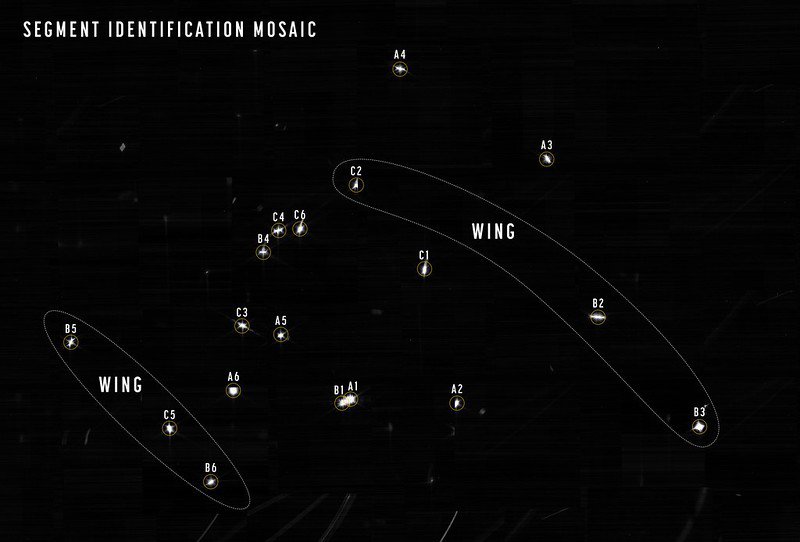Scientists Don’t Lose Sight of Bonus Uses for Telescope Tech
Eyes and telescopes may have a lot in common, but when engineers were looking for a way to dial in mirrors on the James Webb Space Telescope (JWST), they probably didn’t think about its uses right here on Earth. Let’s spend some time focusing on similarities between eyes and telescopes to see how work on the largest and most complex space telescope ever is helping improve human vision with LASIK.
Up First: Terminology
You’re probably familiar with your eye’s pupil, the opening in the center of your iris that allows light to enter your eye. Telescopes have pupils too, though as often happens in science, the meaning of the word has been changed slightly so we have to be a little careful about how we use it. In the language of physics—specifically optics, or the study of light—any opening that light travels through is an aperture. So your eye’s pupil is an aperture, and the corresponding aperture on a modern telescope is typically a large mirror that gathers light from the far reaches of the universe.

This image shows NASA's James Webb Space Telescope's iconic 21 foot 4-inch primary mirror. It was folded to a much smaller size for takeoff.
Once light enters these apertures, it follows a certain path determined by various other structures. (The path light follows through a telescope is called ... you're not going to believe this ... the light path. We know, we know, scientists aren’t the most creative at naming things.) After entering your pupil, light passes through a lens that directs it to the back of the eye. In a telescope, light may bounce off additional mirrors or be sent through lenses before reaching its destination. In both your eye and a telescope the most important destination is something called the focal plane, an area where incoming light will come into focus.
In your eyes, your vision will be at its best if incoming light is focused precisely on the retina. With telescopes, clever engineering can bring light to focus at one point, or additional components can be used to send light down multiple paths simultaneously.
Finally, to get any useful information, we need some sort of detector that will react when struck with light, perhaps sending a signal related to the light’s color or intensity to some device for further processing. The rods and cones on your retina do exactly that, responding to different brightnesses and wavelengths of light, and sending that information to your brain. Telescopes can be equipped with instruments that can respond to incoming light in a number of different ways. A camera might produce images much like our eyes, but we can get even more information from a spectrograph that uses additional optical elements to precisely measure how much light of each color is being collected.
Getting a Clear JWST Picture
Getting the most out of a telescope, especially one as large and expensive as JWST, requires careful detector design and precision engineering of each and every element the light encounters along the way to the instruments. Prior to JWST’s launch, experts meticulously manufactured and assembled many lenses, filter wheels, beam splitters and other one-of-a-kind components. While all are important, none of them can function properly if one specific piece isn’t precisely shaped and aligned: the telescope’s primary mirror. (Remember those terms we discussed earlier? This is its aperture.) From the primary mirror, light reflects off of a secondary mirror and then travels back toward the instruments.
In order to fit into its rocket for launch, JWST had to be folded into a compact shape, with both the primary and secondary mirrors in positions that made it impossible for them to do their jobs. Within two weeks of its launch on December 25, 2021, the telescope had unfolded and the mirrors were approximately in the right position. But this isn’t horseshoes or hand grenades … close isn’t good enough to decode the mysteries of the universe!

This image mosaic was created by pointing the James Webb Space Telescope at a bright, isolated star in the constellation Ursa Major known as HD 84406.
The JWST team is currently in the process of aligning the 18 individual segments of the gold-coated primary mirror to produce the sharpest image possible. Aligning the mirror segments is slow and precise work. Small motors attached to the back of each segment allow for the individual mirror to be moved and warped as needed until collectively the 18 segments are able to act as a single 21.3-foot-wide mirror. To achieve the final alignment, the mirrors can be moved distances that are smaller than the wavelength of the incoming light, or about 1/10,000th the width of an average human hair! That’s an engineering feat on its own, but even those tiny adjustments can only do so much if the mirror segments don’t have perfectly smooth, flat and scratch-free surfaces.
The process of shaping a telescope mirror during production involves multiple rounds of grinding away unneeded material and polishing the mirror’s surface. Engineers take extremely precise measurements along the way to guide the next round of grinding and ensure the mirror is reaching the desired shape. These measurements are important, but can be very time consuming, so engineers looked for a way to speed up the mirror-shaping process.
Seeing Another Use
During JWST’s development, engineers used wavefront sensing to measure how light was reflecting off of the mirrors at microscopic scales. Older wavefront sensors could have done the job, but experts developed a new system, called an infrared Scanning Shack-Hartmann System, to allow for a relatively quick measurement of a portion of the JWST mirror segments to guide the next step of grinding its entire surface. One of JWST’s instruments, the Near Infrared Camera, will also function as a wavefront sensor later this year to bring the mirror segments into their final alignment.
It will be months before we see the results of this wavefront sensing on JWST, but there’s a chance your vision (or perhaps the vision of someone you know) has already been improved by the very same technology.
We mentioned the pupil, lens and retina above, but we left out one important piece of your eye: the cornea. Your cornea is the first layer light travels through as it enters your eye. Irregularities in the shape of someone’s cornea alters the path light takes through the rest of their eye, potentially causing less-than-ideal vision.
The engineers who helped measure the shape of JWST’s mirror segments went on to incorporate the same ideas into a system ophthalmologists can use to measure the shape of their patient’s eyes. Now it’s become a common tool used in laser-assisted in situ keratomileusis, or LASIK, the eye surgery performed to correct vision problems.
A system called iDESIGN gathers precise measurements of the patient’s cornea and guides the surgeon to the best possible approach during the LASIK procedure. As Louisiana Ophthalmologist Dr. Blake Williamson put it, “Bringing proven space technology to medical sciences is a no-brainer if you find areas of synergy where it can better serve patients.”
With more than half a million LASIK procedures being performed each year, the technology developed for JWST is already giving humanity a clearer picture of the world around them!


